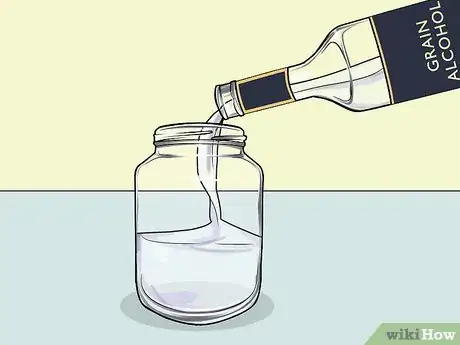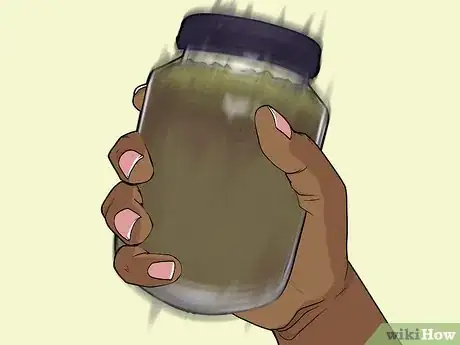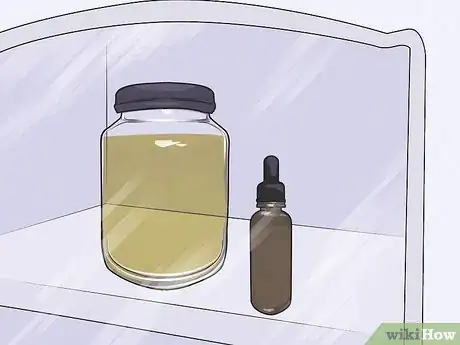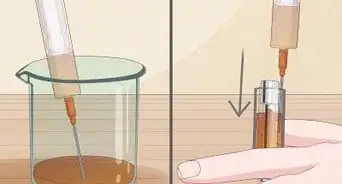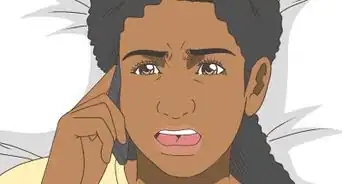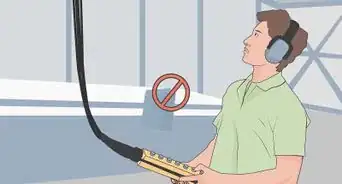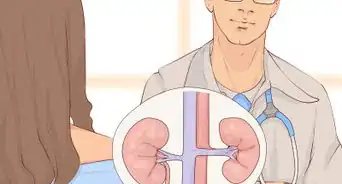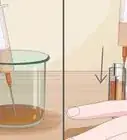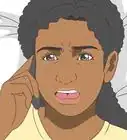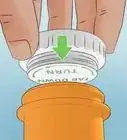This article was co-authored by Jamie Corroon, ND, MPH and by wikiHow staff writer, Hannah Madden. Dr. Jamie Corroon, ND, MPH is the founder and Medical Director of the Center for Medical Cannabis Education. Dr. Corroon is a licensed Naturopathic Doctor and clinical researcher. In addition to clinical practice, Dr. Corroon advises dietary supplement and cannabis companies regarding science, regulation, and product development. He is well published in the peer-review literature, with recent publications that investigate the clinical and public health implications of the broadening acceptance of cannabis in society. He earned a Masters in Public Health (MPH) in Epidemiology from San Diego State University. He also earned a Doctor of Naturopathic Medicine degree from Bastyr University, subsequently completed two years of residency at the Bastyr Center for Natural Health, and is a former adjunct professor at Bastyr University California.
This article has been viewed 19,900 times.
If you use marijuana for pain management or stress relief, you’ve probably come across marijuana tinctures before. These highly concentrated herbal extracts are great for quickly and discreetly ingesting marijuana, especially if you aren’t interested in smoking or vaping. While you can find tinctures in dispensaries, making your own isn’t hard—all it takes is some preparation and a few weeks of waiting. Keep reading to learn how you can make your own cannabis tincture at home in just a few steps.
Steps
Expert Q&A
-
QuestionHow do I calculate how much CBD I need?
 Jamie Corroon, ND, MPHDr. Jamie Corroon, ND, MPH is the founder and Medical Director of the Center for Medical Cannabis Education. Dr. Corroon is a licensed Naturopathic Doctor and clinical researcher. In addition to clinical practice, Dr. Corroon advises dietary supplement and cannabis companies regarding science, regulation, and product development. He is well published in the peer-review literature, with recent publications that investigate the clinical and public health implications of the broadening acceptance of cannabis in society. He earned a Masters in Public Health (MPH) in Epidemiology from San Diego State University. He also earned a Doctor of Naturopathic Medicine degree from Bastyr University, subsequently completed two years of residency at the Bastyr Center for Natural Health, and is a former adjunct professor at Bastyr University California.
Jamie Corroon, ND, MPHDr. Jamie Corroon, ND, MPH is the founder and Medical Director of the Center for Medical Cannabis Education. Dr. Corroon is a licensed Naturopathic Doctor and clinical researcher. In addition to clinical practice, Dr. Corroon advises dietary supplement and cannabis companies regarding science, regulation, and product development. He is well published in the peer-review literature, with recent publications that investigate the clinical and public health implications of the broadening acceptance of cannabis in society. He earned a Masters in Public Health (MPH) in Epidemiology from San Diego State University. He also earned a Doctor of Naturopathic Medicine degree from Bastyr University, subsequently completed two years of residency at the Bastyr Center for Natural Health, and is a former adjunct professor at Bastyr University California.
Medical Director of the Center for Medical Cannabis Education The answer to this question is tricky. The true answer is, “it depends”. It depends on the person, the intended use, the method of administration, and other factors. Due to decades-long federal prohibition of Cannabis, randomized controlled trials are currently absent, so we don't have a definitive answer.
The answer to this question is tricky. The true answer is, “it depends”. It depends on the person, the intended use, the method of administration, and other factors. Due to decades-long federal prohibition of Cannabis, randomized controlled trials are currently absent, so we don't have a definitive answer.
References
- ↑ https://herb.co/guides/how-to-make-cannabis-tincture/
- ↑ https://www.cannabistherapynetwork.org/wp-content/uploads/2019/05/POD-cast_How-To-Make-Cannabis-Tincture-1.pdf
- ↑ https://herb.co/guides/how-to-make-cannabis-tincture/
- ↑ https://hightimes.com/guides/cannabis-tinctures/
- ↑ https://www.projectcbd.org/recipe-cbd-pain-relief-tincture
- ↑ https://herb.co/guides/how-to-make-cannabis-tincture/
- ↑ https://hightimes.com/guides/cannabis-tinctures/
- ↑ https://www.cannabistherapynetwork.org/wp-content/uploads/2019/05/POD-cast_How-To-Make-Cannabis-Tincture-1.pdf
- ↑ https://www.projectcbd.org/recipe-cbd-pain-relief-tincture
- ↑ https://www.projectcbd.org/recipe-cbd-pain-relief-tincture
- ↑ https://www.cannabistherapynetwork.org/wp-content/uploads/2019/05/POD-cast_How-To-Make-Cannabis-Tincture-1.pdf
- ↑ https://hightimes.com/guides/cannabis-tinctures/
- ↑ Jamie Corroon, ND, MPH. Medical Director of the Center for Medical Cannabis Education. Expert Interview. 10 March 2020.
- ↑ Jamie Corroon, ND, MPH. Medical Director of the Center for Medical Cannabis Education. Expert Interview. 10 March 2020.
- ↑ Jamie Corroon, ND, MPH. Medical Director of the Center for Medical Cannabis Education. Expert Interview. 10 March 2020.



